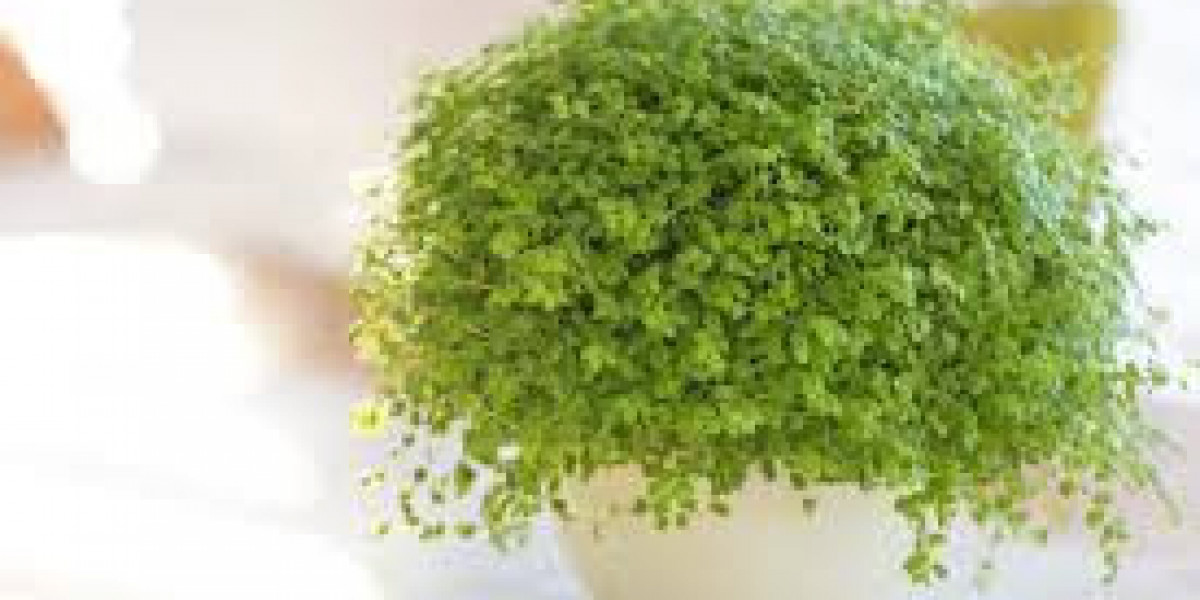The Baby Tears plant (Soleirolia soleirolii), often admired for its delicate foliage and carpet-like growth, is a favorite among plant lovers seeking to add lush greenery to their indoor or outdoor spaces. With its tiny, round leaves and vibrant green hue, this ground cover offers a whimsical, soft texture that enhances terrariums, container gardens, and shaded landscapes. In this article, we’ll explore what makes the Baby Tears plant so special, how to care for it, and why it’s gaining popularity among hobbyists and designers alike.
What is the Baby Tears Plant?
Native to the Mediterranean region, particularly Corsica and Sardinia, the Baby Tears plant is a mat-forming perennial that thrives in moist, shaded environments. It gets its common name from the delicate, teardrop-shaped leaves that cluster tightly on creeping stems. Despite its gentle appearance, this plant is a vigorous grower that can quickly cover soil, stones, or walls, making it ideal for ground cover or as a cascading element in hanging baskets.
Its botanical name, Soleirolia soleirolii, honors the French botanist Joseph François Soleirol, who collected the plant in the 19th century. Over time, it has also gained nicknames such as “angel’s tears,” “mind-your-own-business,” and “Irish moss,” though it is unrelated to true mosses.
Indoor and Outdoor Uses
The Baby Tears plant is incredibly versatile. Indoors, it’s commonly used in terrariums or as a decorative pot accent, often planted around larger houseplants to soften the base of containers. Its ability to grow in low light and high humidity makes it an ideal companion for ferns, orchids, and other tropical plants.
Outdoors, it thrives in USDA zones 9 to 11, where it can serve as a dense ground cover in shaded garden beds. It can also be grown between stepping stones or around water features for a natural, moss-like appearance. However, caution should be taken when planting outdoors—its rapid growth and spreading nature mean it can become invasive if not managed properly.
Care and Maintenance
Caring for a Baby Tears plant is relatively straightforward, provided a few essential conditions are met:
Light: Prefers bright, indirect light indoors. Outdoors, it thrives in partial to full shade. Direct sun can scorch its leaves.
Water: Keep the soil consistently moist but not soggy. The plant is sensitive to drought and may wilt quickly if allowed to dry out.
Humidity: High humidity is a must, especially indoors. Misting regularly or placing a humidity tray nearby can help.
Temperature: Best kept in temperatures between 60°F and 75°F. Avoid cold drafts or exposure to freezing temperatures.
Soil: Well-draining, rich potting mix with good moisture retention is ideal.
Regular trimming helps keep its growth in check and encourages fuller, more compact foliage. Fertilize monthly during the growing season with a balanced, diluted houseplant fertilizer to keep it looking vibrant.
Common Issues
The Baby Tears plant is relatively pest-resistant but can be susceptible to root rot if overwatered. Yellowing leaves often indicate too much water or poor drainage. Occasionally, pests like aphids or spider mites may appear but are usually easy to manage with insecticidal soap or neem oil.
Where to Buy
Whether you're looking to fill a shady garden nook or add charm to a terrarium, the Baby Tears plant is a delightful choice. For high-quality plant care products and sustainable solutions to support healthy plant growth, consider visiting superiorhydrola.com. Their offerings are tailored to meet the needs of both novice and seasoned gardeners.
Final Thoughts
The Baby Tears plant brings a touch of enchantment to any space with its soft, emerald foliage and gentle growth habit. With the right care, it can be a long-lasting and low-maintenance addition to your plant collection. Whether cascading from a pot or carpeting a shady corner, this little beauty is sure to make a big impression.








